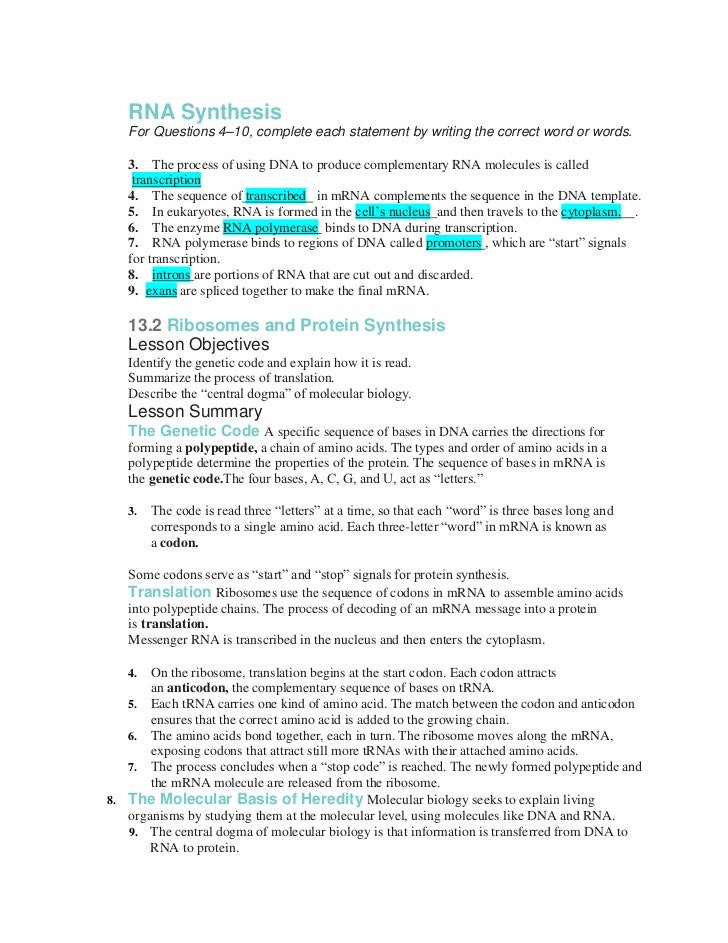Genetic Technology Study Guide Answers
- Chapter 13 Genetic Technology Study Guide Answers
- Section 9.4 Genetic Engineering Study Guide Answers
- 9.4 Genetic Engineering Study Guide Answers
- If looking for the ebook Genetic technology reinforcement study guide answers in pdf form, in that case you come on to correct site. We present complete release.
- EBooks Chapter 13 Genetic Technology Study Guide Answers are currently available in various formats such as PDF, DOC and ePUB which you can.
If looking for the ebook Genetic technology reinforcement and study guide answer in pdf form, then you have come on to the correct website. We furnish utter.

At the present level of advancement of biotechnology, what are the main techniques of genetic engineering? What are restriction enzymes? How do these enzymes participate in recombinant DNA technology? Restriction enzymes, or restriction endonucleases, are enzymes specialized in the cutting of DNA fragments, which each have an effect on specific sites of the DNA molecule.

Restriction enzymes are used in recombinant DNA technology to obtain with pieces of DNA molecules with precision, which will later be inserted into other DNA molecules cut by the same enzymes. Genetic Engineering Review - Image Diversity. How is genetic engineering used to create bacteria capable of producing human insulin? In the production of human insulin by bacteria, the human insulin gene is incorporated into the genetic material of these microorganisms. The mutant bacteria multiply, forming lineages of insulin-producing bacteria.
Bacteria contain circular strands of DNA called plasmids, which are mini-chromosomes that act as an accessory to the primary DNA. To create mutant bacteria capable of producing insulin, a plasmid is submitted to the effect of restriction enzymes (restriction endonucleases) specialized in cutting DNA fragments. The once circular plasmid is opened by the restriction enzyme. The same enzyme is used to cut a human DNA molecule containing the insulin gene. The piece of human DNA containing the insulin gene is then bound to the plasmid at its ends through the help of DNA ligases. The recombinant plasmid containing the human insulin gene is then inserted into the bacteria.

Another human hormone already produced by recombinant bacteria is GH (somatotropin, or growth hormone). The insertion of DNA molecules into the cells of an individual is also used in gene therapy, a promising treatment for genetic diseases.
In gene therapy, cells from an organism deficient in the production of a given protein receive (by means of vectors, such as virus) pieces of DNA containing the protein gene and then begin to synthesize the protein. Genetic Cloning. What is cloning?
Cloning is the production of an organism genetically identical to another by means of genetic engineering. The basis of cloning is nucleus transplantation technology. Clark cgc30 forklift owners manual. A nucleus from a cell is extracted, generally from an embryonic (undifferentiated) cell and this nucleus is inserted into a previously enucleated reproductive cell (in general an egg cell); the egg is then implanted in the organ where the embryonic development will take place. If embryonic development occurs, the new organism will have an identical genetic content to the organism organism whose cell nucleus was used in the transplantation. Genetic Engineering Review - Image Diversity: Polymerase Chain Reaction.
How does PCR works? PCR, polymerase chain reaction, is a method to synthesize many copies of specific regions of a DNA molecule known as target-regions. Its inventor, Kary Mullis, won the Nobel Prize for Chemistry in 1993.
First, the DNA to be tested is heated to cause the double helix to rupture and the polynucleotide chains to be exposed. Then, small synthetic sequences of DNA known as primers and containing nucleotide sequences similar to the sequences of the extremities of the region to be studied (for example, a region containing a known gene exclusive to a given organism) are added. The primers are paired with the original DNA at the ends of the gene to be amplified. Enzymes known as polymerases, which catalyze DNA replication, and nucleotide supply are added.
The primers are then completed and the chosen region is replicated. In the presence of more primers and more nucleotides, millions of copies of that specific region are generated. (PCR is very sensitive, even when using a minimal amount of DNA). Genetic Engineering Review - Image Diversity: DNA Fingerprinting.
Chapter 13 Genetic Technology Study Guide Answers
What molecular biology principle is the basis for DNA fingerprinting? DNA fingerprinting, the method of the identification of individuals using DNA, is based on the fact that the DNA of every individual (except for identical twins and individual clones) contains nucleotide sequences exclusive to each individual. Although normal individuals of the same species have the same genes in their chromosomes, each individual has different alleles and even in the inactive portions of the chromosomes (heterochromatin), there are differences in nucleotide sequences among individuals. Genetic Engineering Review - Image Diversity: Genetic Engineering Dangers and Ethics. Why are recombinant DNA technology and nucleus transplantation technology still dangerous?
Recombinant DNA technology and nucleus transplantation technology (cloning) are extremely dangerous since they are able to modify, in a very short time, the ecological balance that evolution has taken millions of years to create on the planet. During the evolutionary process, under the slow and gradual effect of mutations, genetic recombinations and natural selection, species emerged, were modified, and genetic heritages were formed. With genetic engineering, however, humans can mix and modify genes, making changes with unpredictable long-term consequences, risking the creation of new plant or animal diseases, new types of cancers and new disease outbreaks. It is a field as potentially dangerous as the manipulation of nuclear energy.
What is the main moral problem regarding the cloning of human individuals? In addition to the biological perils, a very serious moral problem involves nucleus transplantation technology concerning humans: the individual rights of a human being are violated when a man or woman is made as a copy of another. Since it is impossible to first ask if the person to be cloned wants to be a genetic copy of another person or not, it is clear that the most important human right is being violated when making one human as a copy of another: the right to individual freedom.
Section 9.4 Genetic Engineering Study Guide Answers
This is a danger to democracy, whose most basic principle is the respect of individual freedom. Now that you have finished studying, these are your options:. Review this subject, read all Q&As again. Study the next subject: go to.
9.4 Genetic Engineering Study Guide Answers
Choose another Q&A sequence to study by using the subject menu.
Comments are closed.